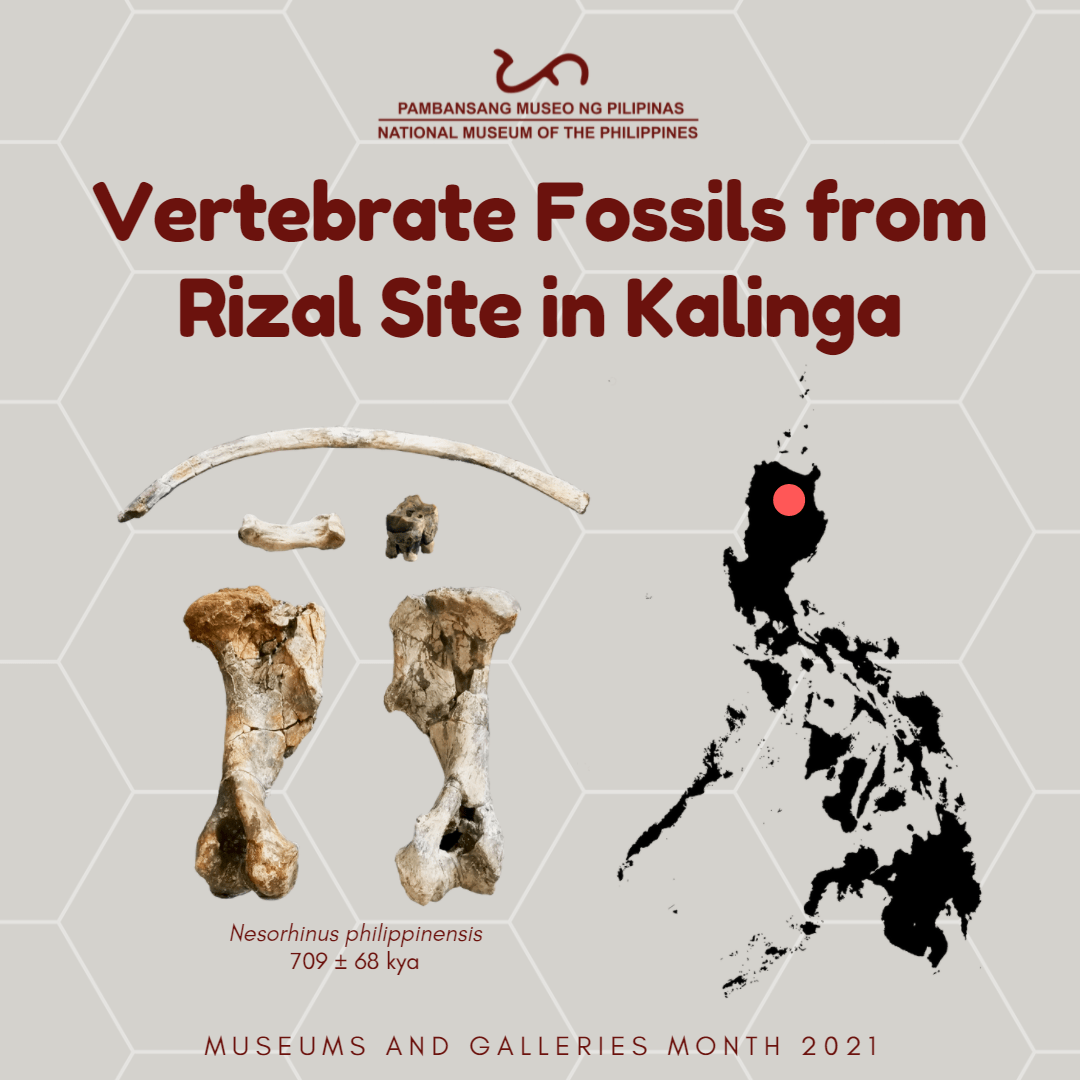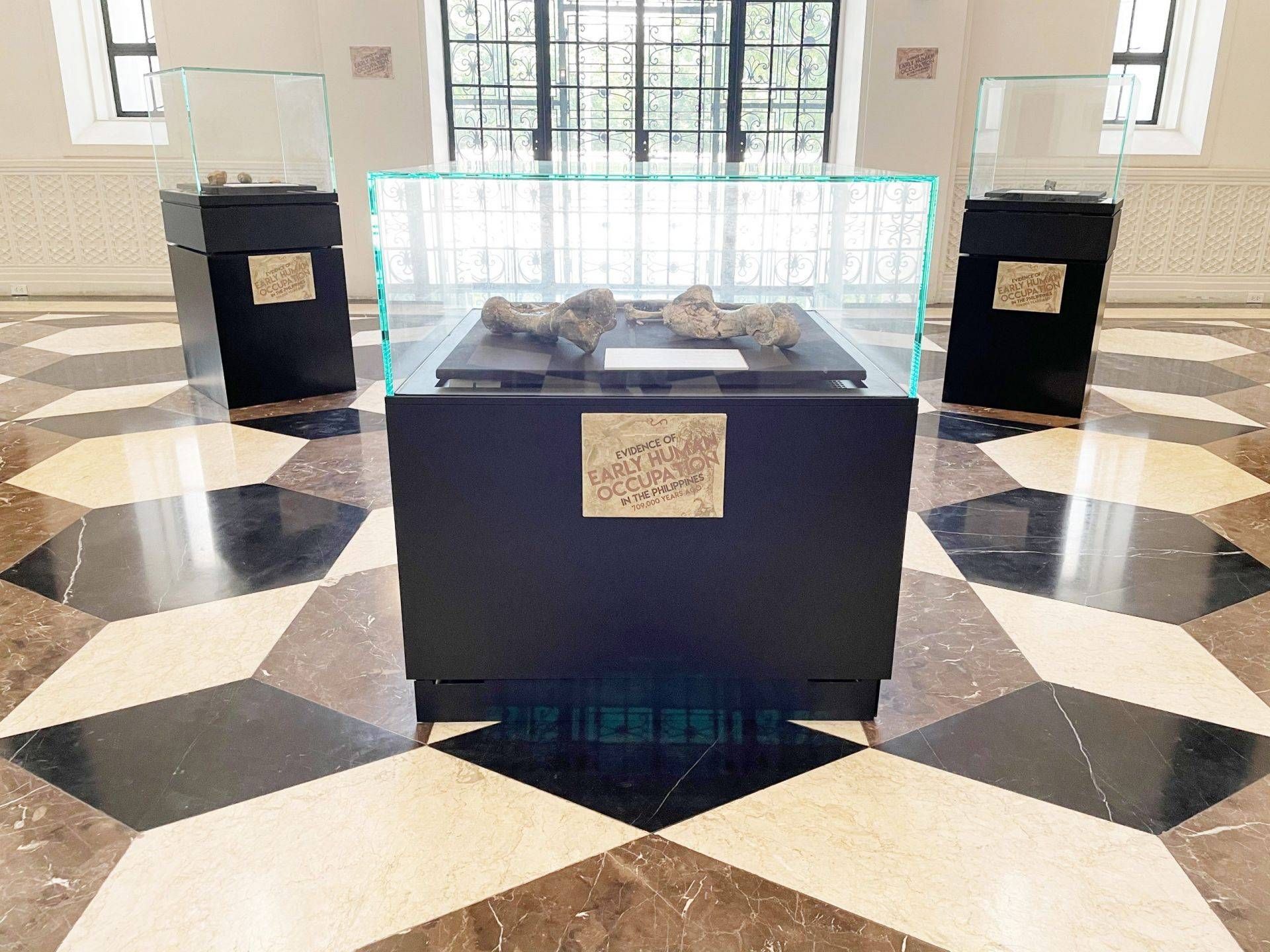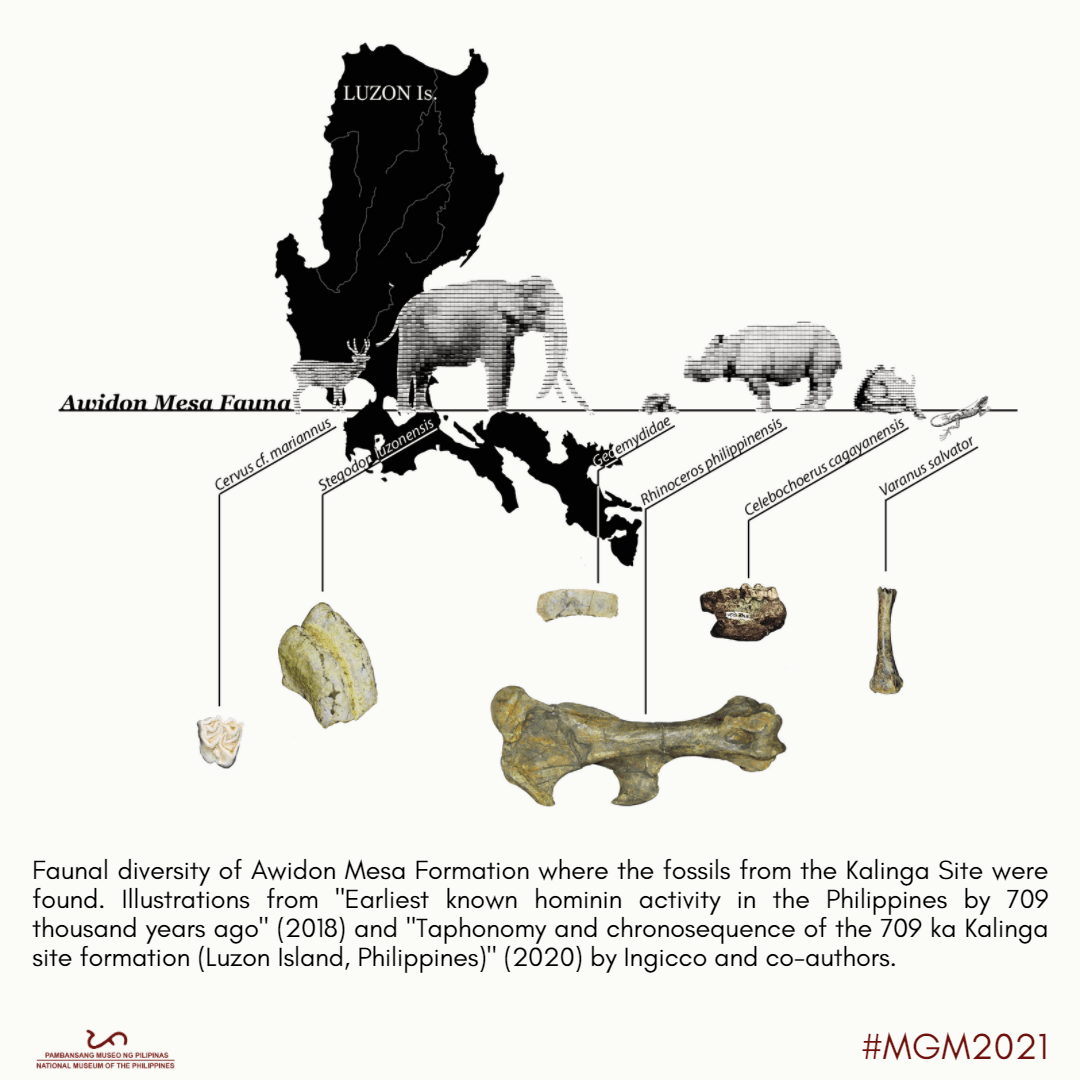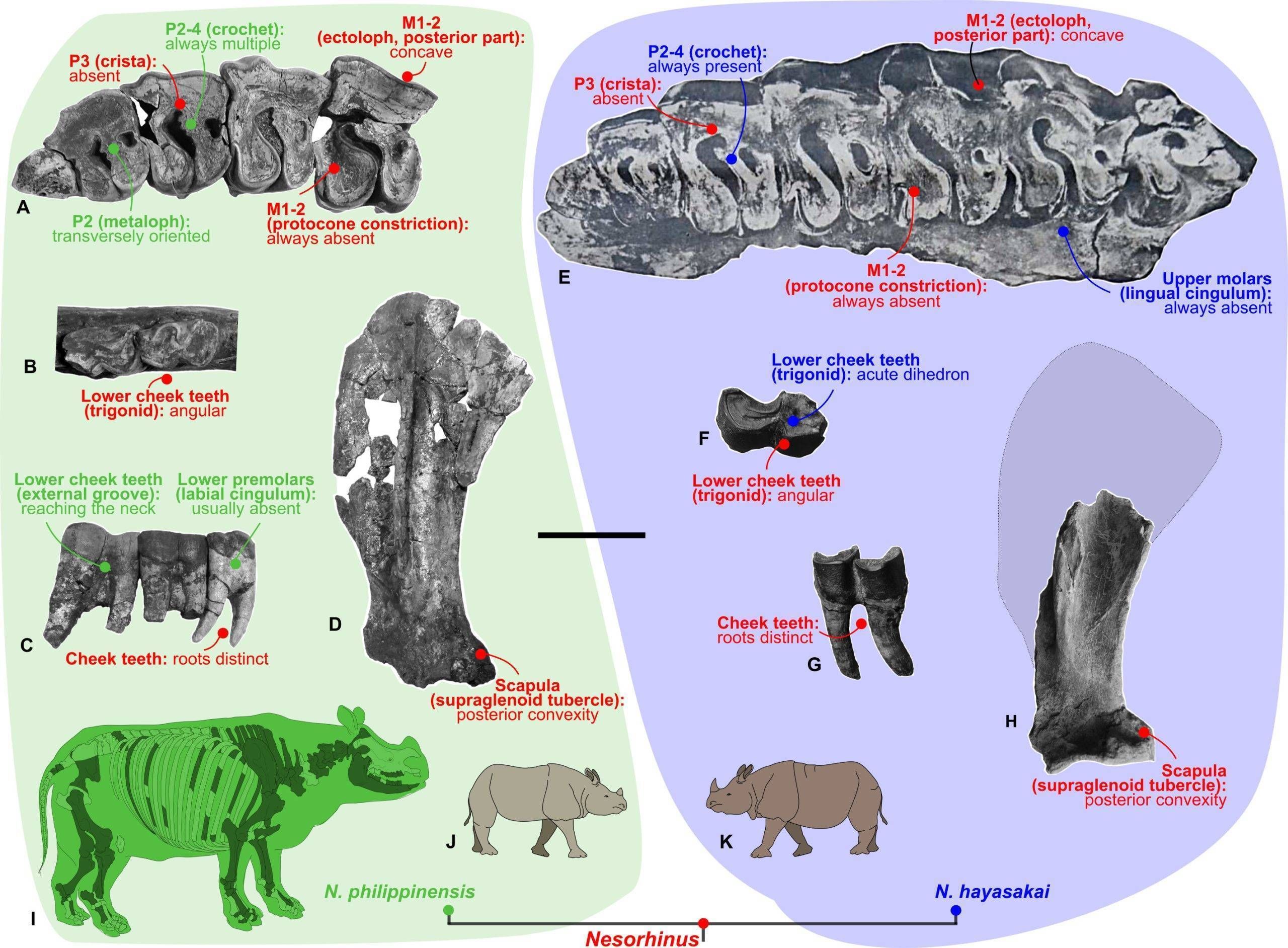Vertebrate Fossils from Rizal, Kalinga


Evidence of Early Human Occupation Exhibition at the Ayala Reception Hall of NMNH.
Photo by the National Museum of the Philippines (2021)


Comparison of dental and skeletal characters of the Kalinga rhino (Nesorhinus philippinensis, left image) and rhino from Taiwan
(N. hayasakai, right image). Illustration from “A new rhinoceros clade from the Pleistocene of Asia sheds light on mammal dispersals to the Philippines” by Antoine et al. (2021).
The #NationalMuseumPH continues to celebrate the Museums and Galleries Month with today’s #TrowelTuesday, featuring the fossil fauna from the archaeological site in Rizal, Kalinga.
The Ayala Reception Hall at the National Museum of Natural History holds several important exhibits, one of which highlights a set of specimens considered to be the oldest evidence of early human presence in the Philippines. The exhibition was launched during a press briefing in May 2019, on the publication release of an article that presented the Kalinga excavation findings. Select fossilized remains of an extinct endemic species of megafauna that roamed our land hundreds of thousands of years ago are shown, along with associated stone tools.
How important are these fossils?
The faunal assemblage of the Awidon Mesa Formation, where the Kalinga Site lies, is composed of the extinct Philippine rhinoceros (Nesorhinus philippinensis), stegodon (Stegodon luzonensis), and pig (Celebochoerus cagayananensis), as well as freshwater turtle, monitor lizard, and Philippine brown deer found in situ (in the original position at deposition) within a clay layer.
Fossil fauna give us a glimpse into the past, at a time when the climate and environmental conditions supported the existence and proliferation of these diverse taxa or animal groups. The relationships and movement or dispersal patterns of animals may also be gleaned from these remains, like this study on Philippine rhino (read here: https://tiny.one/WorldRhinoDay ).
Modifications or observable changes on the surface of fossilized animal remains may also reveal past activities. These may either be human-induced like the butchery marks seen on the exhibited long bones and ribs of the rhino (read here: https://tinyurl.com/KalingaStoneTools), or natural processes leading to the deposition of these materials and formation of the site (click here for a paper: https://tinyurl.com/KalingaSiteTaphonomy ). Fossils may also provide a site’s relative or even absolute date, like how the rhino premolar on display determined the archaeological site of Kalinga to be 709 ± 68 thousand years ago.
Site preservation and material culture context are important in understanding our nation’s heritage and past. Report to your local government authorities or the nearest #NationalMuseumPH office, if you have information on discovered fossils and artifacts or looting activities in your area.
Your #NationalMuseumPH has re-opened its doors to the public following the IATF Guidelines on the Implementation of Alert Level System for COVID-19 Response in Pilot Areas. Book your slot or explore our collections and exhibitions through this website.
#FossilFauna
#MuseumsAndGalleriesMonth
#MGM2021
#MuseumFromHome
#YearOfFilipinoPrecolonialAncestors
Text by Marian Reyes and Maricar Belarmino, and posters by Timothy James Vitales | NMP Archaeology Division
© National Museum of the Philippines (2021)
inquiry@nationalmuseum.gov.ph
(+632) 8298-1100
